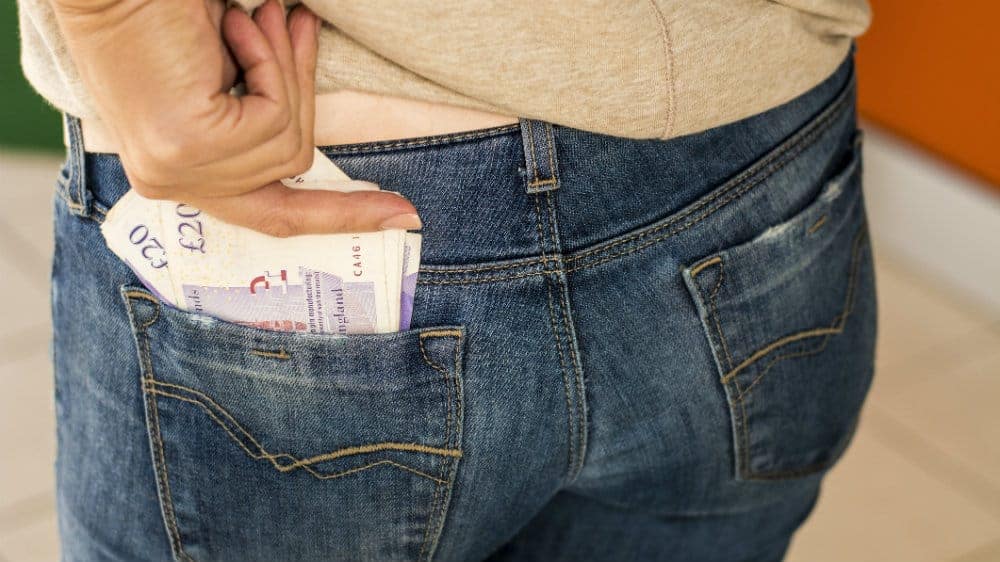The perfect storm could be brewing, and it might overwhelm many unprepared Brits in April 2022. Tax increases, higher inflation and the energy price cap rise are all coming amid continuing concerns about the Covid-19 pandemic. Here’s how much more you’re likely to spend starting in April 2022.
[top_pitch]
National Insurance Contributions (NICs)
The government has confirmed a 1.25% increase in the National Insurance Contributions (NICs) rate from 6 April 2022 to 5 April 2023. How much more will you pay? Grab your calculators, and let’s crunch the numbers!
|
|
Current NIC threshold from 6 April 2021 to 5 April 2022 |
Current NIC rate from 6 April 2021 to 5 April 2022 |
New NIC rate from 6 April 2022 to 5 April 2023 |
|||
|
Standard threshold (Annually) |
Higher threshold (Annually) |
Standard threshold rate |
Higher threshold rate |
Standard threshold rate |
Higher threshold rate |
|
|
Employed (Class 1) |
£9,568 -£50,270 |
Above £50,270 |
12% |
2% |
13.25% |
3.25% |
|
Self-employed (Class 4) |
£9,568 – £50,270 |
Above £50,270 |
9% |
2% |
10.25% |
3.25% |
Based on the figures above, an employee who currently earns between £9,568 and £50,270 pays 12% on their earnings. However, from April 2022 onwards, the employee will pay 13.25%.
This means that if you earn £40,000 annually, you’ll pay [13.25% of (£40,000-£9,568)] – [12% of (£40,000-£9,568) = £380 more in NICs from 6 April 2022 to 5 April 2023. You can use a NICs calculator to avoid confusion and make it easier to make calculations.
[middle_pitch]
Dividend tax
A 1.25% increase in dividend tax is also expected across all tax bands starting April 2022. However, the £2,000 dividend allowance remains.
|
|
Current dividend tax rate from 6 April 2021 to 5 April 2022 |
Dividend tax rate from 6 April 2022 |
|
Basic rate |
7.5% |
8.75% |
|
Higher rate |
32.5% |
33.75% |
|
Additional rate |
38.1% |
39.35% |
|
Dividend trust rate of income tax |
38.1% |
39.35% |
So, let’s say you earn £3,000 in dividends and £29,570 in wages. Your total income will be £32,570. Take away your Personal Allowance (£12,570), and you’ll be left with a taxable income of £20,000.
You’ll pay 20% tax on £17,000 of wages (£3,400) and, since you have a £2,000 dividend allowance, you’ll only pay 7.5% tax on £1,000 of dividends (£75). However, starting 6 April 2022, this increases to £87.50 (8.75% tax on £1,000 of dividends), meaning you’ll pay £12.50 more.
Energy price cap
The energy price cap protects consumers on standard or default variable tariffs from being overcharged. However, the energy crisis has brought about supply problems, which have caused prices to soar.
Currently, the energy price cap averages £1,277 a year, but energy bodies predict a more than 50% increase in April 2022. There’s also a probability that the energy price cap will climb above the £2,000 mark by the end of the year. It might be time to make some changes in your household as it’s not clear how the government will assist.
Inflation
The more inflation rises, the higher the price of goods and services. Returns on savings also reduce, while interest rates on loans increase.
The latest statistics from ONS indicate that the Consumer Prices Index (CPI) rose by 5.1% in the 12 months to November 2021, up from 4.2% in October.
Many families have started feeling financial pressures, meaning it might be high time you review your savings and spending habits. This is mainly because experts forecast inflation isn’t going to drop soon.
Fuel prices
Fuel prices don’t look like they’re going down either. According to RAC Fuel Watch, the latest UK average petrol and diesel prices stand at £145.60 and £148.79 pence per litre, respectively.
In fact, experts don’t expect fuel prices to come down due to the consistent cost of crude oil and inadequate supply from producers.







